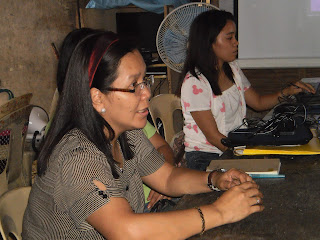Achieving scale in housing and basic infrastructure services provision while building on community- driven strategies, institutional and policy support from public and private partners was the main trajectory underscored during the CLIFF Reflection Learning and Planning (RLP) Event as well as the CLIFF Stakeholders’ Board (CSB) Meeting Proper held in Iloilo City last February 5-9, 2011. The event was organized by the Philippine Alliance composed of Homeless People’s Federation Philippines Inc. and the Philippine Action for Community-led Shelter Initiatives Inc. in coordination with the Homeless International, a UK-based NGO responsible for the over-all management of the Community–led Infrastructure Finance Facility (CLIFF). CLIFF is a global programme that aims to support organized communities to demonstrate slum upgrading solutions using a recyclable finance facility.
CLIFF Partners who participated in the CSB Meeting were: Philippine Alliance, Indian Alliance, National Cooperative Housing Union Ltd. (NACHU), Pamoja Trust, Akiba Mashinani Trust (AMT), Muungano Wanavijiji and Lumanti. This created a venue for each CLIFF partner to share and learn from other countries’ experiences, success stories, and challenges in CLIFF implementation from community mobilization, planning, design and construction and fund management aspects including partnership building and networking.
CLIFF Philippines in Focus


The first day of the learning exchange focused on CLIFF Philippine experience. Local and international delegates were exposed to two CLIFF- supported projects in Iloilo City: the KABALAKA Demonstration Housing and Community Managed Resettlement Housing Projects. Likewise, the Philippine Alliance facilitated a sharing discussion highlighting the community-led processes in all aspects of the CLIFF management cycle. Equally important in project implementation are the valuable contributions of different stakeholders like the government, academic institutions, private sector and the institution of technical support known as the Technical Assistance Movement for People and Environment, Inc (TAMPEI), which remarkably gained appreciation from local and international CLIFF partners.

Also, Alliance shared about its challenges in CLIFF Project implementation. Among these are its difficulty in facilitating social preparation activities, assessing target participants’ loan affordability levels, sustaining communities’ participation in CLIFF-related trainings and workshops, procurement and actual housing construction, dealing with communities’ labor equity and CLIFF loan repayment issues, and strengthening its partnerships and networks.
CLIFF-Wide Sharing
Following this whole day activity, a CLIFF-wide sharing was facilitated by the Homeless International which provided participants a global perspective of CLIFF programme and how it is managed in other countries. This was also an opportunity for CLIFF partners to discuss their important breakthroughs in CLIFF implementation, their foreseen challenges and insights for successful scaling-up.

The Indian Alliance’s presentation highlighted the organization’s strategies in developing financing mechanisms in the context of slum upgrading and housing for informal settlements. Very notable about the Indian Alliance’s experience is its worth and innovativeness in leveraging financial resources from the government and private financing institutions to subsidize CLIFF Projects. While CLIFF India has gone so far in terms of scale, the Alliance recognizes that numerous challenges are still underway. These include time delays, increasing construction cost, political impediments and the need to explore and adopt community-driven construction practices that could further scale-up community-managed construction projects.

In Kenya, CLIFF programme was instrumental in federation building which apparently strengthened communities’ capacities and project involvement in areas like savings mobilization, enumeration, community mapping, site planning, construction management, loan repayment and collection. Kenya’s experience on CLIFF has shown that communities are capable of building their own houses. They just need sustainable access to affordable finance, motivation and facilitation. While security of tenure is regarded as one of the crucial elements of a decent housing, CLIFF provided communities a leeway to achieve it incrementally. The slow pace of loan recovery in some CLIFF-supported projects is one of the present challenges faced by the Kenyan Alliance. Thus, in order to support communities in their loan repayment, they learned that income generating activities should be incorporated in the CLIFF programme.

The National Cooperative Housing Union Ltd. (NACHU) and Lumanti, the two new CLIFF implementing partners from Kenya and Nepal provided a background profile of their organizations, their key initiatives and their significant milestones in the housing sector. Operating on a microfinance-based framework, NACHU adopts a holistic approach in delivering affordable and sustainable housing to the urban poor. It basically integrates savings mobilization; incremental mode in housing development; provision of organizational, technical and financial support services to target groups; and mainstreaming gender, environment, lobbying and advocacy issues in designing housing solutions for slum dwellers. Similarly, Lumanti has developed wide-ranging strategies which are essential take-off points for the CLIFF programme implementation.
“After many years of struggle, some changes are seen. Communities organised. Government is getting positive. Some resources are allocated and partnership is possible. However, struggles need to be continued for scaling up the small changes achieved and for effective sustenance of a new beginning that has just started”. These encouraging statements from Sama Upreti, one of the learning exchange participants showed that Lumanti has successfully gained recognition and support from the government and other stakeholders which is viewed as a vital factor when housing is to be delivered sustainably.

Larry English, Executive Director of Homeless International discussed how the CLIFF programme supports the development of civil society organizations in delivering shelter and basic services solutions on a sustainable basis. He presented a framework describing the different levels of support services that these organizations need to become financially, technically and politically dependent while achieving project scale.
Decent Housing: Is It Affordable? – A Forum Discussion
CLIFF funding partners from the Swedish International Development Cooperation Agency (Sida) and Department for International Development (DFID) joined the rest of the learning exchange participants during the third day’s area visit. This gave them an idea about the progress of the ongoing CLIFF-Community Managed Resettlement Housing Project in San Isidro, Jaro. Likewise, they were exposure to the production facility and construction application of the alternative building technology called Interlocking Compressed Earth Blocks (ICEB) in CLIFF San Isidro Project. Most of them were inspired by the community’s involvement in planning, house design, procurement, construction and over-all project management. They also visited another community in Zone 8, Veterans Village, which is targeted as the next site for CLIFF expansion this year.

A back-back activity with the area visit was a forum discussion on the topic “Decent Housing: Is it Affordable?”. This event was organized by the Philippine Alliance as an advocacy strategy to influence national housing regulations and policies. Specifically, the forum discussion aims to evaluate the government and private sector’s current approaches, practices, institutional and financial support mechanisms in delivering decent and affordable housing to the poor. This event was an opportunity for international partners to understand the complexity of housing laws and regulations in the Philippines which sometimes limit the exploration of alternative and more affordable housing solutions.

Invited speakers during the forum discussion were Engr. Isagani Jalbuena, from the National Housing Authority (NHA) Region VI; Engr. Gil Ramos and Marilyn Susteger from the Housing and Land Use Regulatory Board (HLURB) Region VI; Arch. Regie Gregorio from the Iloilo City Engineering Office; Juanita Genovania-Artiola from PAG-IBIG Region VI; Engr. Rony Firmeza former Chairman of the Iloilo City Urban Poor Affairs Office and Mr. Jose Roni S.J. Peñalosa, Head Officer of Iloilo City Planning and Development Office (CPDO). These key shelter and local government representatives assured the Philippine Alliance of their continued support to the urban poor sector and their current housing initiatives.
CLIFF Stakeholders’ Board Meeting Proper
After the four-day reflection, learning and planning event, all CLIFF partners gathered last February 8 and 9 for the CLIFF Stakeholders’ Board (CSB) Meeting to discuss CLIFF Project updates and key results of their last year’s Business plan. This meeting was also convened for the deliberation and approval of this year’s proposed CLIFF projects.
CLIFF RLP, A Success!
Having seen the current progress and scaling-up potentials of CLIFF-supported projects in the Philippines, donor agencies, Homeless International and other CLIFF partners were optimistic that this progress could lead to greater results. This is only possible if the Philippine Alliance has sustainable organizational, financial, technical and institutional support. It is noteworthy that the impressive involvement and logistical support from Iloilo City government, partner academic institutions and local communities during the Reflection, Learning, Planning and the CSB have significantly contributed in making this weeklong event a successful one.




















































